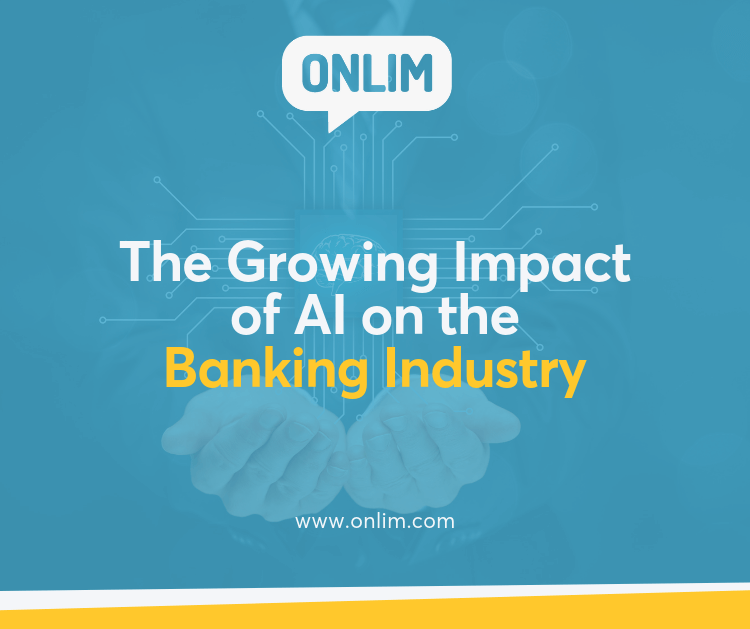The Growing Impact of AI on the Banking Industry
Guest post by Raul Harman, Consultant and Editor in Chief at Technivorz.
A recent research study shows that artificial intelligence is going to help financial institutions save $1 trillion in project cost savings. According to some stats by Accenture, AI will add $1.2 trillion in value to the financial industry by 2035.
Download our free e-book to learn everything you need to know about chatbots for your business.
Here are a few key aspects of the banking industry AI can improve.
Minimizing Operating Costs
Even though financial institutions already use the latest technologies to make their jobs safer and simpler, their employees still need to handle loads of paperwork daily. Such time-intensive and repetitive tasks can cause an increase in operational costs and harm the overall employee productivity, setting the foundation for greater human error.
When implemented in the banking industry, AI eliminates these error-prone human processes. For example, machine learning, automation tools, AI assistants, and handwriting recognition can streamline and simplify many aspects of human jobs. These tools can collect, classify, and enter customer information directly from their contracts and forms.
Artificial intelligence also improves the way banks impose their regulatory controls. This is a great opportunity for banks to leave manual and repetitive tasks to AI-backed machines and spend more time on creative, high-value tasks like providing clients with better, highly personalized services or finding new methods of improving client satisfaction.
According to the above-mentioned recent research study by Accenture, the implementation of AI into daily operations can help banks reduce costs by up to 25%.
Improving Customer Support
Customer satisfaction directly impacts the performance of any organization, including those in the banking industry. Namely, it directly shapes people’s perceptions of the financial institution’s brand. Above all, it influences banks’ client targeting and retention efforts.
One of the major problems users face is that financial institutions never seem to be open when they need them most. For example, what if a customer’s account gets blocked during the holidays? Or, what if a customer wants to learn more about the bank loans you provide later in the day when your employees have already clocked off?
Remember that your customers’ money never sleeps. Therefore, financial institutions should focus on providing their clients with the right services when they need them most.
Well, this is where AI chatbots and voice assistants step in. These sophisticated tools are available 24/7. Irrespective of their time zone or location, users can use chatbots for any task that doesn’t require human interaction, such as familiarizing themselves with your services, solving problems, and seeking answers to any question they may have. Most importantly, AI chatbots are constantly learning more about your customers by observing their previous interactions and browsing history in order to provide them with highly personalized user experiences.
One such example is Bank of America that launched Erica, their virtual assistant, which sends notifications to their clients, offers relevant information, gives tips on how to save money, informs users about credit report updates, and helps them pay bills and make transactions automatically. Erica is constantly learning new stuff about the need of their clients and, based on them, provides relevant content and personalized customer support. Most importantly, it enables effective, multichannel customer support, letting users seek help both via text and voice inputs.
Chatbots, voice assistants and AI, stay informed with the free Onlim newsletter.
Helping Users Choose their Credit and Loans Wiser
Financial institutions still rely on factors like one’s credit score, credit history, revenue, and banking transactions to determine whether they’re creditworthy. This is exactly where artificial intelligence can help, as its analysis goes far beyond this customer data. AI loan decision systems are using machine learning to observe the patterns and behaviors that help a bank determine whether a user can really be a good credit customer or not.
When implemented properly, AI makes credit decision systems more accurate and reliable. Given that, it’s not surprising at all that the majority of capital markets professionals believe that AI loan decision tools will replace human-based operations in the next five years.
AI Provides Better Regulatory Compliance
Banking is one of the highest regulated industries globally. All banks need to have reasonable risk profiles to prevent some major problems, provide better customer support, and identify greater patterns in customer behavior. Above all, they rely on sophisticated tools to identify and prevent the risk of financial crimes like money laundering.
And, with the growth of AI tools, banks have experienced the revolution in their efforts to provide safer and more reliable customer experiences. These pieces of software usually rely on cognitive fraud analytics that observe customer behaviors, track transactions, identify suspicious activities, and assess the information of different compliance systems. Even though these tools haven’t reached their full potential yet, they are already helping banks improve their regulatory compliance and reduce the unnecessary risk.
Over to You
Artificial intelligence is transforming financial services, providing greater value to customers through chatbots and personalization, minimizing risks and costs, improving employee productivity, and ensuring higher regulatory compliance. Even though these are only the humble beginnings of AI implementation, it is obvious that it will soon become the nerve center of the banking industry.
What are Large Language Models (LLMs)?
March 18th, 2024|
What are chatbots and how do they work?
November 23rd, 2023|
The AI Act and its impact on the use of chatbots
October 27th, 2023|



